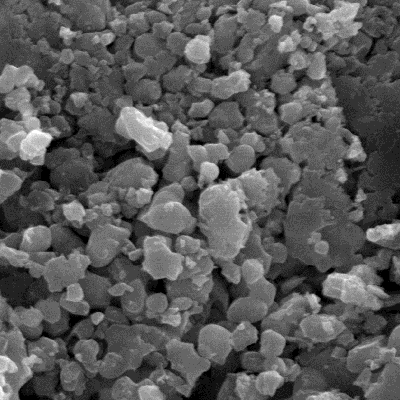Materials
Calcium phosphate materials have been widely used as implant materials since significant research in the early 1970’s demonstrated the biocompatibility and utility of these materials as implants. Within this class of calcium phosphates known as orthophosphates, there exists a tremendous diversity of chemical and structural variations. Extensive toxicity studies on this class of bioceramics has demonstrated a high degree of biocompatibility, minimal if any inflammatory response or foreign body response and no evidence of local or systemic toxicity. This is because the calcium and phosphate ions are the most common ions in the body and these compounds allow direct bonding of soft tissue or bone cells. The most commonly used bioceramics are hydroxyapatite, β- tricalcium phosphate and mixtures of hydroxyapatite and β-tricalcium phosphate (usually referred to as biphasic HA/TCP). All of these materials can be made in a variety of forms, densities or porosities and finished to shapes or physical characteristics required(1)
1/ Wouter Habraken, Pamela Habibovic, Matthias Epple, Marc Bohner,
Calcium phosphates in biomedical applications: materials for the future?,
Materials Today, Volume 19, Issue 2, 2016, Pages 69-87, ISSN 1369-7021, https://doi.org/10.1016/j.mattod.2015.10.008.

Calcium Hydroxyapatite
Ca10(PO4)6(OH)2
CaHA is generally used in applications where a more durable form of material is required. Our HA meets the requirements of ASTM F1185 and ISO 13779. HA is the natural mineral component of hard tissue comprising 60 to 70 % of bone and > 95 % of tooth enamel. Stoichiometric hydroxyapatite has a Ca/P ratio of 1.67.
Biphasic Calcium Phosphate
Biphasic CaP is a HA/β TCP combination. While there are many different variations, the most commonly used forms are 60% HA/40% β TCP and 20 HA/80% β TCP. By varying the composition ratio, the remodeling rate of the bioceramic may be influenced. Biphasic Calcium Phosphates have Ca/P ratios between 1.5 and 1.67.
β Tricalcium Phosphate
Ca3(PO4)6
β TCP transforms to biological HA in the presence of body fluids. During transformation it acquires some of the trace minerals found in native bone and so forms a very biocompatible surface. As such, it remodels faster than HA and is generally preferred over HA for bone grafting indications. Stoichiometric tricalcium phosphate has Ca/P ratio of 1.5.
Fluorapatite
Fluorapatite is very similar to hydroxyapatite but some of the hydroxyl groups that define the HA are replaced with fluorine ions. Fluorapatite is the least soluble form of these bioceramics.
Custom Calcium Phosphate Formulations
Custom Calcium Phosphate Formulations can be made according to customer requirements. Examples include materials such as calcium pyrophosphates and α-tricalcium phosphate. The calcium pyrophosphates have a Ca/P ratios less than tricalcium phosphate. α-tricalcium phosphate is the high temperature form of β-tricalcium phosphate.
